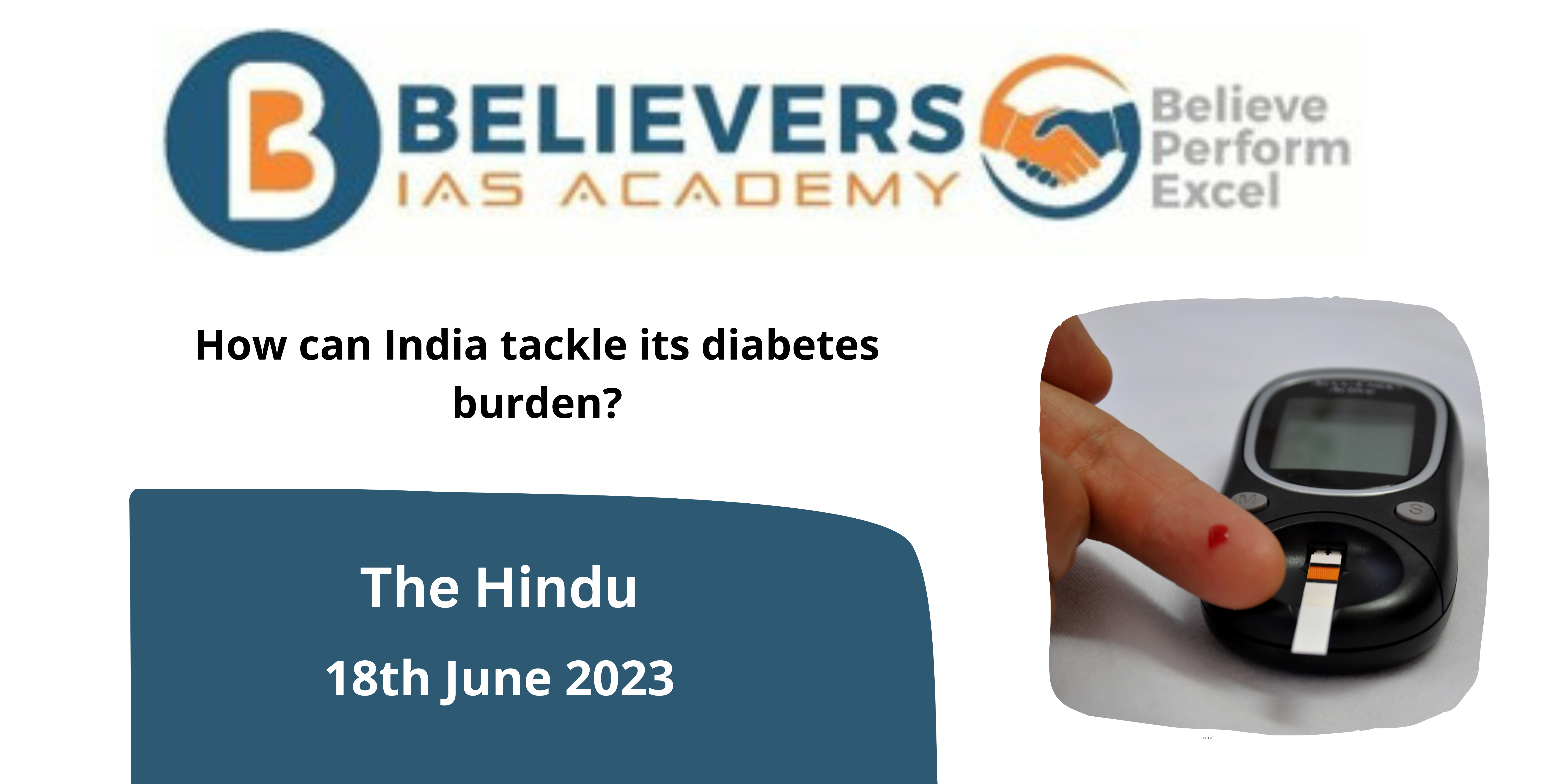How can India tackle its diabetes burden?
Context :
The findings of the largest long-term (2008–2020) study on metabolic variables on the Indian subcontinent, which was part of the ICMR–InDiab study, was released last week in The Lancet (by Anjana Ranjit Mohan et al). The NCD (chronic non-communicable diseases) burden estimate was started in 2008 and completed across five stages between 2008 and 2020, with each phase encompassing five States (all seven northeastern States were included in one phase). 1.24 lakh people who were over the age of 20 participated in the door-to-door survey, which was conducted.
Points to Ponder:
- Diabetes prevalence: According to the report, there are 101.3 million diabetics in India, or around 11% of the population.
- Prevalence of Pre-diabetes: According to the study, 15.3% of Indians are at high risk of getting diabetes due to their pre-diabetic state. This equals an additional 136 million people.
- Concerns about an Emerging Crisis: Due to the startling number of people impacted, the study raises questions about an Emerging Crisis of Diabetes in India. It emphasises the necessity of quick action to deal with the problem and stop the prevalence of diabetes from rising further.
- Prevention as a Key Strategy: The study emphasises the importance of prevention as a primary strategy for combating diabetes. The focus should be placed on delaying the transition from pre-diabetes to diabetes and preventing the start of potentially fatal complications in diabetics.
- Complications and Morbidity: Poor blood sugar management can cause serious problems such as cardiovascular disease, kidney disease, neuropathy, blindness, and lower-extremity amputations. The higher rates of morbidity and mortality are largely influenced by these consequences.
- Public Awareness and Lifestyle Changes: According to the study, initiatives should be started to raise awareness of lifestyle changes that can help people manage their blood sugar levels and avoid complications. To promote routine check-ups, adherence to recommended treatment regimens, and reinforcement of health-seeking behaviour, widespread education programmes should be conducted worldwide.
- Faster Conversion to Diabetes: Pre-diabetes to Diabetes Develops More Rapidly in India: The study discovered that pre-diabetes to diabetes develops more rapidly in India, often within six months. This emphasises the significance of quick action to encourage a healthy lifestyle that can halt or halt the development of diabetes.
- Diabetes Prevalence in Urban and Rural Regions: In India, the prevalence of diabetes is higher in urban regions (16.4% vs. 8.9%). As traditional behaviours change, there is a larger chance for prevention in rural regions. The existing low prevalence in rural areas can be maintained by promoting a healthy diet, frequent exercise, and regular testing.
- Surprises and Regional Variations: The study found unexpected results, including high prevalence rates in rural parts of Kerala, a state known for stronger social development indicators. These findings were also seen in 2-3 tier cities. In comparison to other states in the region, the northeastern states of Tripura and Sikkim also displayed greater prevalence rates.
- Future Research and Projects: To ascertain the true prevalence of diabetes in the neighbourhood, the researchers intend to carry out a more thorough investigation. Follow-up studies will evaluate the course, the diabetics’ quality of life, and the complications. The study will also monitor the progression from pre-diabetes to diabetes and the condition of people who did not have the disease ten years ago.
- Public-Private Partnerships: To involve the greater community in helping the detection and treatment of diabetes, experts advise forming public-private partnerships. This coordinated strategy can assist in addressing the rising diabetes burden in India.





